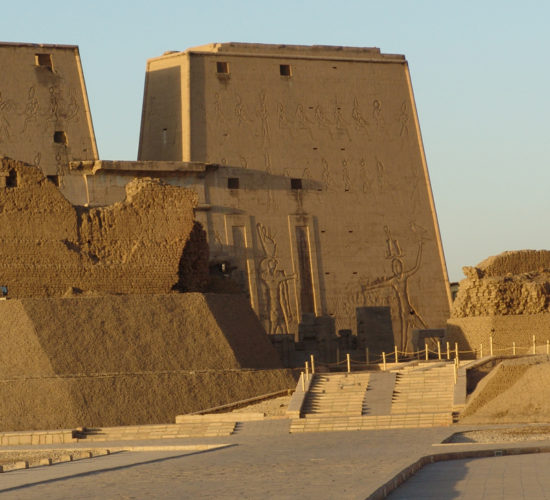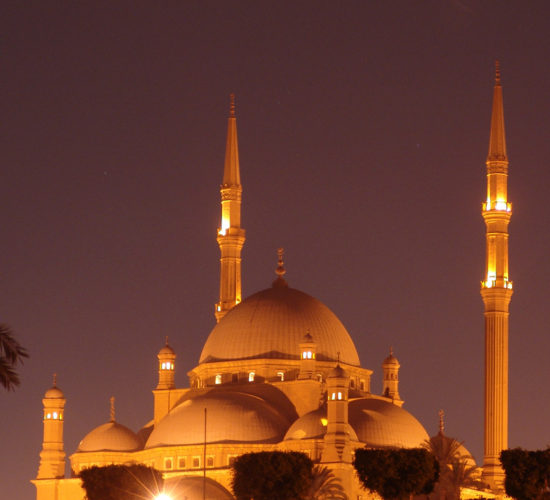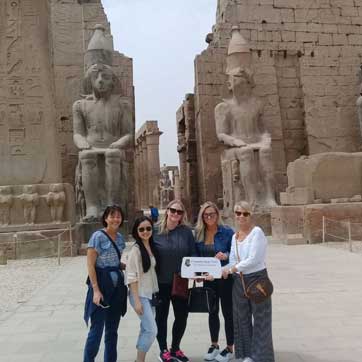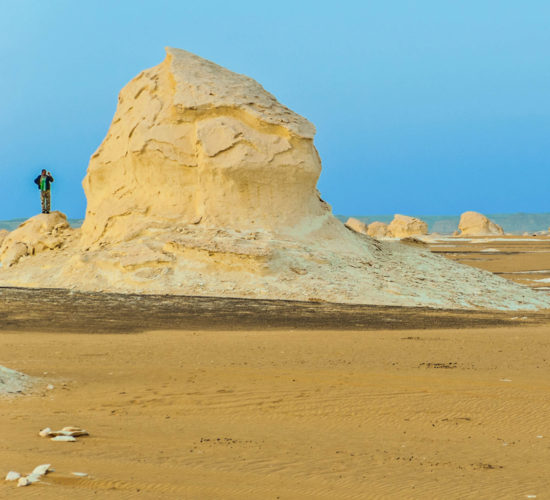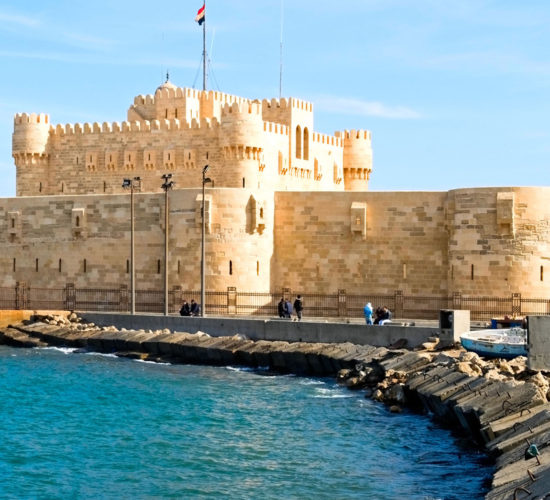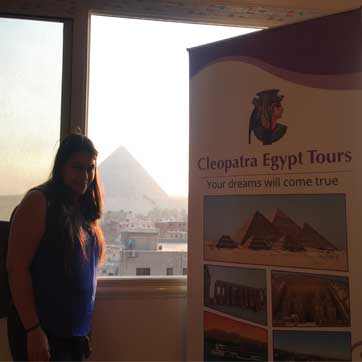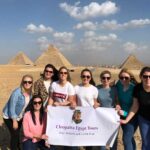Ancient Egyptian symbols
- The Ankh
- Djed
- Eye of Horus
- Eye Of Ra
- Was
- The Scarab beetle
- Cartouche
- The Lotus
- Uraeus
- KA
- BA
- Canopic jars
- Winged Sun
- Ouroboros
- AMENTA
- Tiet
- Feather Of Maat
- Crook and Flail
- Deshret Crown
- Hedjet Crown
- Pschent Crown
- Tree Of Life
- Seba
- Ajet
- Menat
- Sistrum
- Nemyss
- Obelisk
- Shen ring
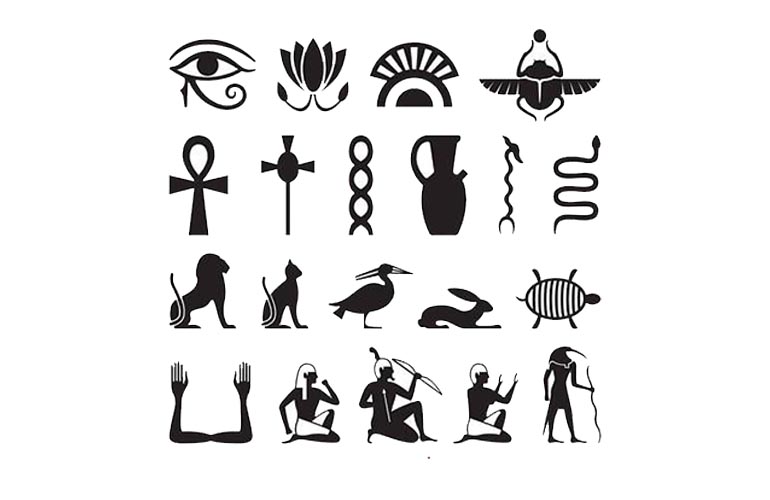
Pharaonic symbols were numerous in the life of ancient Egyptians and varied in their symbols, rituals, and use. Also, the Egyptian creativity in the manufacture and symbol and reliance on them clearly in various aspects of his life and areas, whether social, religious, cultural or recreational and because these symbols have important meanings in the history of the Pharaohs had to be addressed.
The Symbols for Egypt usually relate to Religion and daily life, death, and love, power, and weakness this symbols such as the key of life Ankh, The Lotus flower n soul and spirit The Ka and Ba.
1- The Ankh
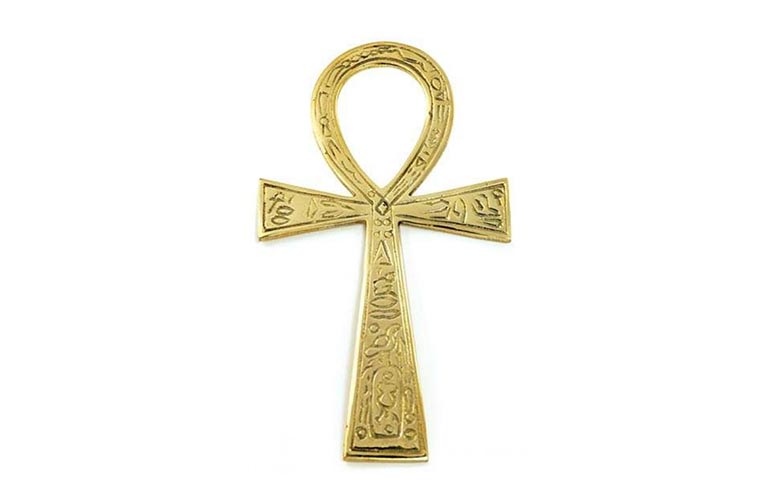
The ankh is the most well-known symbol to come out of ancient Egypt the general meaning of the symbol In its hieroglyphic system of writing the ankh represents the concept of eternal life, The ankh or the key of life The Ankh frequently appears in Egyptian tomb paintings and other art, It is known as “the key of the Nile” as the union between Osiris and Isis The ankh was associated with the cult of Isis was also the Ank depicted as a “cross with a handle” that represented eternal life. [ Read a full article about Ankh symbol ]
2- Djed
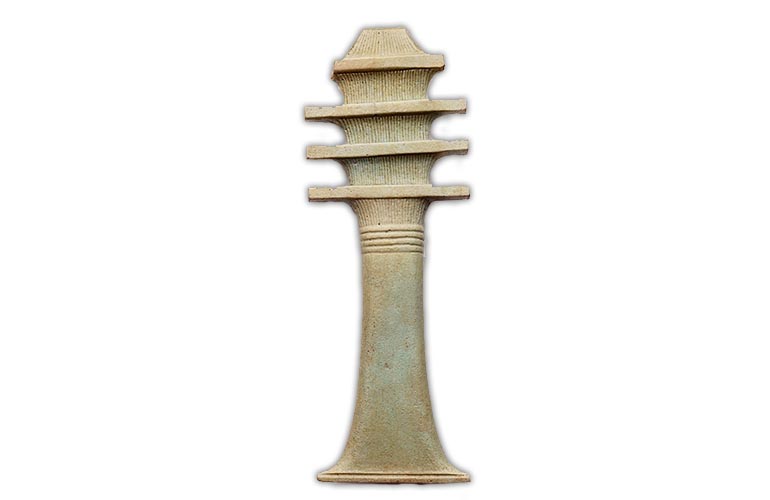
The Djed is an ancient Egyptian symbol for stability Known as “The Backbone of Osiris This symbol was Osirian in nature and was primarily associated with themes of rebirth and regeneration.
3- Wadjet Eye (Eye of Horus )
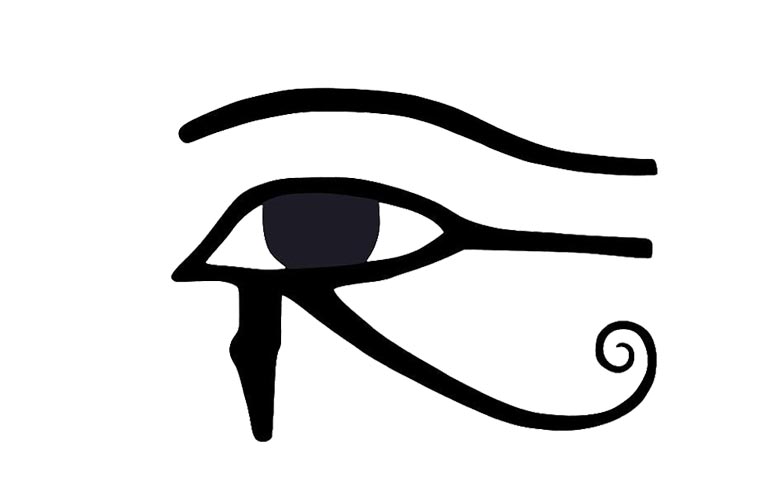
The Eye of Horus, also known as the Eye of Ra, was known in ancient Egypt as a slogan to protect against envy, disease, harmful animals and evil spirits and also good health, and royal power, it’s the most famous of ancient Egyptian symbols n the “Eye of Horus” also represents sacrificial and curative qualities, The ancient Egyptians mastered the industry, as it was made of gold and includes the form of the god Re.
The necklace was placed for Pharaoh’s mummy, thinking that it might protect him in the tomb. Horus’s eye was used as a magic spell for the first time when Horus hired her to restore life to his father Osiris, and then spread widely and became very popular in ancient Egypt. [ Read more about Eye of Horus ]
4- Eye Of Ra
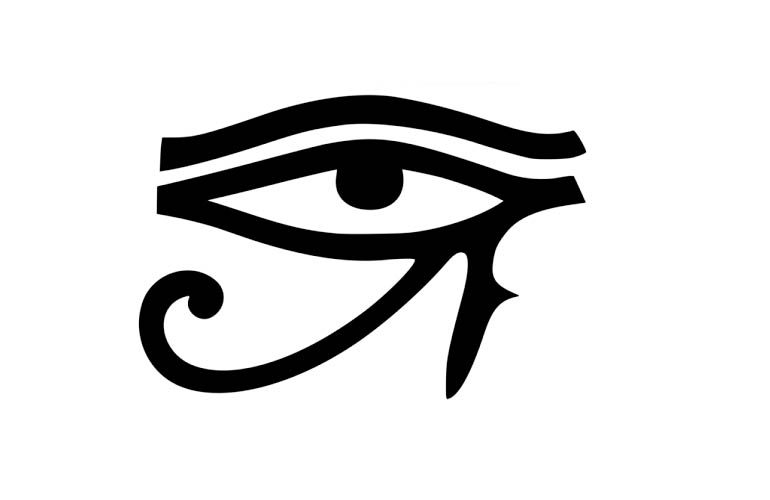
There are different myths about the origin of the Eye of Ra symbol. However, most experts believe that the symbol was actually the right eye of Horus and became known as the Eye of Ra in ancient times. The two symbols mostly represented the same concepts. That said, according to different myths, the Eye of Ra symbol was identified as the personification of many goddesses in Egyptian mythology, such as Wadjet, Hathor, Mut, Sekhmet, and Bastet.
Ra or also known as Re is the sun god in Egyptian mythology. Therefore, the Eye of Ra symbolizes the sun. [ Read a full article about The Eye of Ra ]
5- ‘Was’ Symbol
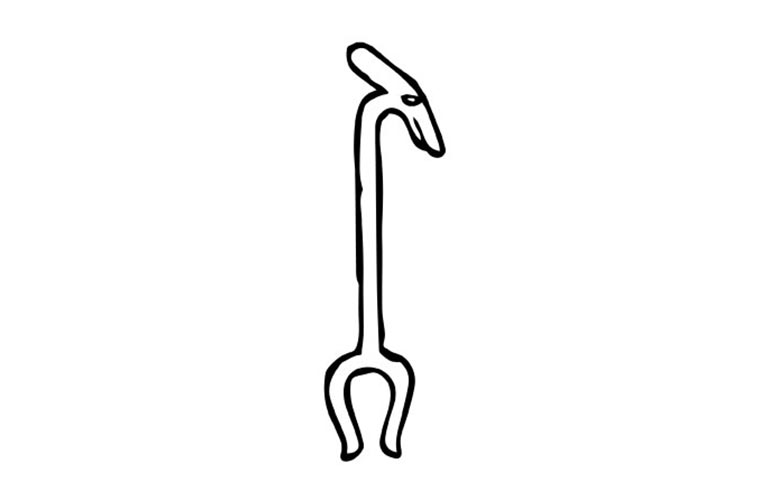
The ‘Was Sceptre’ was one of the most important Egyptian Symbols Was scepter was the symbol of power in ancient Egyptian culture also represented the dominion of gods and According to what the ancient Egyptians believe it also ensured the continuance of a king’s prosperity, The ‘Was Sceptre’ has a straight shaft, a crooked handle in the shape of an animal head and a forked base The crooked top of the staff mirrors the strange animal shape of Set’s own head.
6- The Scarab beetle
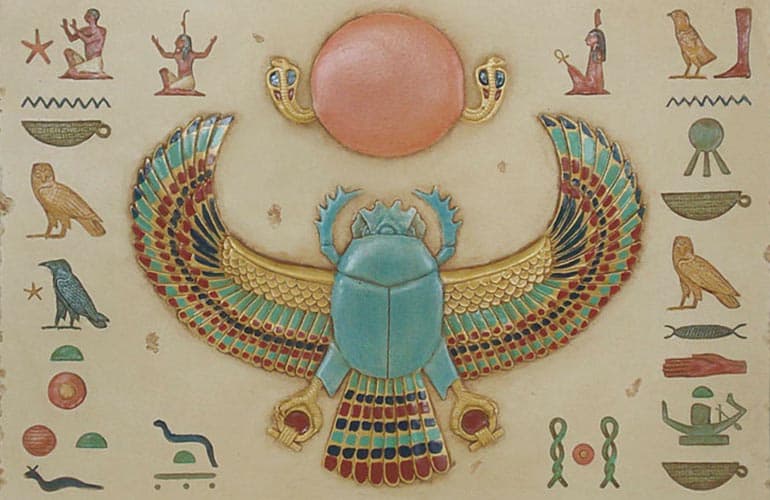
The Egyptian Scarab Beetle was a symbol of death, rebirth, great power, guide and protect in the afterlife the scarab beetle was one of the most important and popular and amulets in for hundreds of years, worn by everyone living and the dead. Its popularity even reached beyond the borders of Egypt, to the east There were many different types of scarabs such as scarab seals heart scarabs, winged scarabs, wedding scarabs, scarabs with spells, scarabs with good wishes and scarabs decorated with figures of animals and Gods.
7- Egyptian Symbols: Cartouche
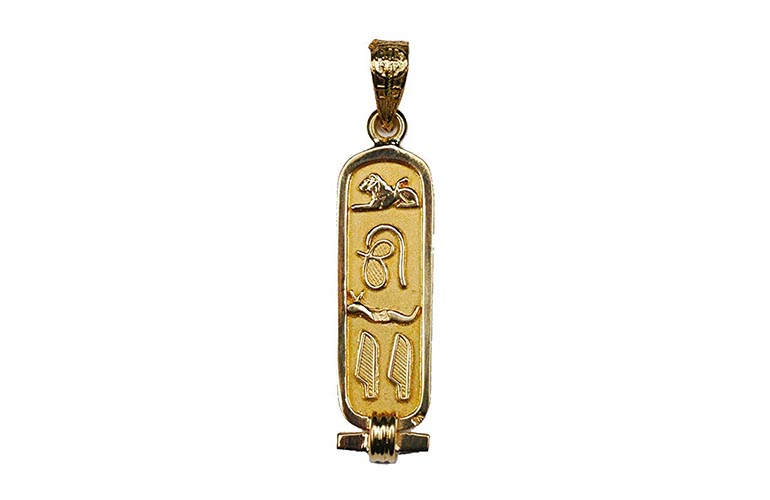
A cartouche is an ancient Egyptian hieroglyphic nameplate The cartouche has an obvious link and symbolism to the sun the cartouche Symbolizes of protection against evil spirits both in this life and the afterlife, The symbol, which had the shape of a circle originally also shaped like an oval with a horizontal bar, was sometimes used as a cartouche. This kind of use aimed to represent divine protection also the cartouche closely linked in appearance to the ouroboros serpent biting its own tail.
8- The Lotus symbol in Ancient Egypt
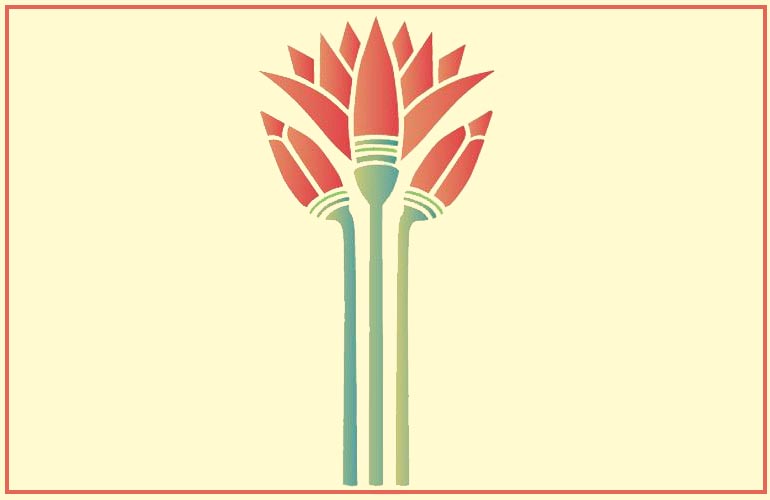
The lotus represents rebirth In ancient Egypt there were two main types of the lotus the white, and the blue also the lotus flower was used as a symbol for the unification of the two Egyptian kingdoms, Lotus was included in the manufacture of perfumes in ancient Egypt, where the flowers were soaked in an inverted form in a fatty substance to obtain the desired fragrance, and the lotus flower has an analgesic colored antispasmodic and has a strange ability to heal infections.
9-Uraeus symbol
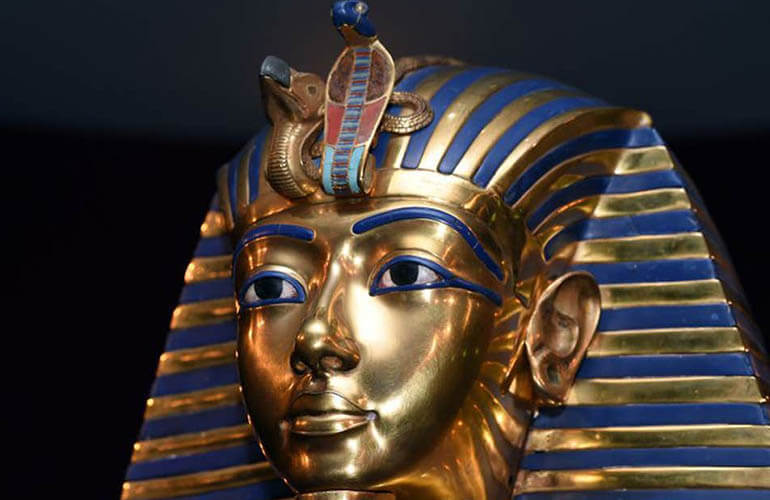
UraeusThe Greek word is an important symbol associated with the Gods, Goddesses, and Pharaohs of ancient Egypt Discover the history, mythology, and beliefs surrounding the ‘Uraeus’ the rearing cobra symbol of Ancient Egypt The cobra represents the goddess Wadjet, a very ancient goddess who is associated with royalty.
The Uraeus cobra symbol was a fetish, an object that was believed to embody magical powers and offer magical protection According to legend, the Cobra was given to the pharaohs as a sign of kingship by the God Geb.
10-KA symbol
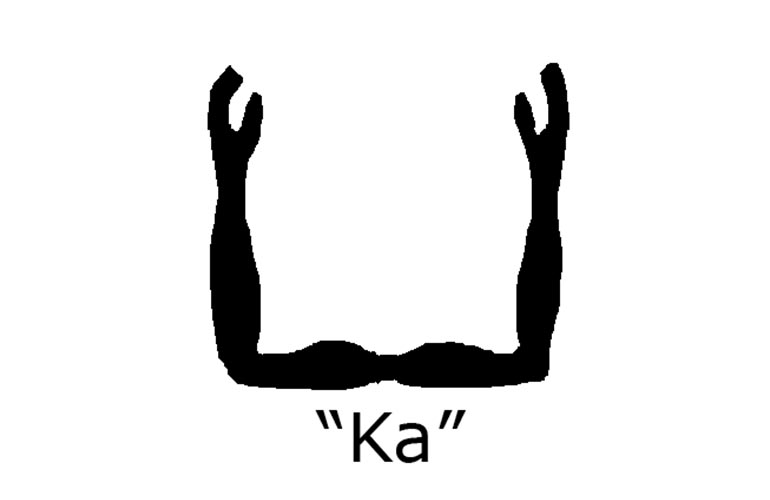
It represents the process of reception of life It also represented the life force or spiritual power that lived within the body of a person and survived death Ka (consort) or the ghost, a material spirit born with man, has been made of light material is not seen, such air, and be in the form of its owner, any image exactly identical to him. The consort of the child was a child, and the old man of the old man, After his death, Ka joined the body until Ba returned, and Ka and Ba united to help the dead person to come back to life again.
That’s why they tried to mummified the body to live forever, and the Ka found an eternal place for his
ka,” was associated with the place where the body was placed in the burial chamber in the cemetery and was leaving only through the false door to enter the shrine.
the ancients made the statues and put them in the tombs to replace the “Ka” instead of the body if stolen or artistic, and more than making these statues because the more they make sure their eternal eternity.
In hieroglyphs, ka is symbolized with arms stretched up or forward.
11-BA symbol
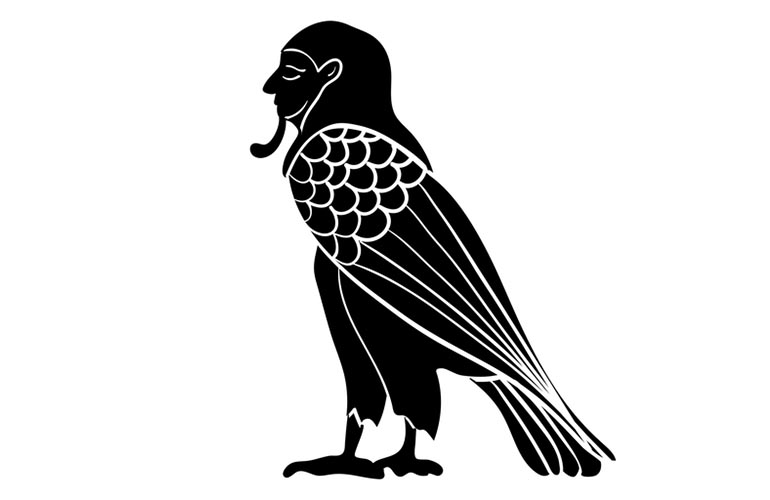
BA: It is the heavenly spirit and human personality in the spirit world because it is always conceived in the form of a bird with a human head carrying the features of the deceased person as if it were a reference to his personality and spirit where she leaves the body after death to the sky where she lives in the stars, and then return to visit the body between Anne and another.
Ba appeared in many of the Egyptian inscriptions tombs and temples and papyrus hovering around the tomb of the owner where the body lies motionless as if there is a hidden force to return repeatedly to see her body, which has been attached to her throughout her life on the earth.
12-Canopic jars of Ancient Egypt
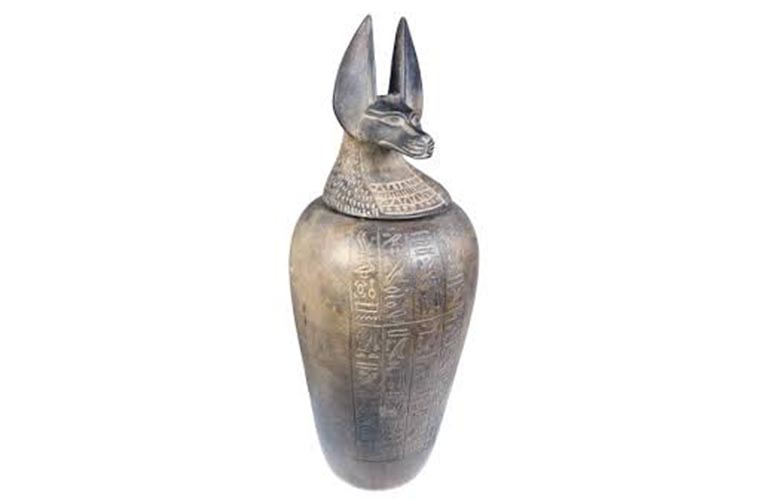
The canopic jars were the containers used to hold the internal organs because The ancient Egyptians believed that when a person died they would return again to the afterlife The ancient Egyptians believed that they would need all internal organs after death in the‘afterlife’ Canopic jars were created to contain all of the organs so that upon entering the afterlife.
*I msety a man with a head to preserve the liver.
*Duamatef with a jackal head to preserve the stomach.
*Happy with the head of the baboon to preserve the lungs.
*Qebehsenuf with the head of a falcon to preserve the intestines.
[ Read more about Canopic Jars ]
13-Egyptian winged sun
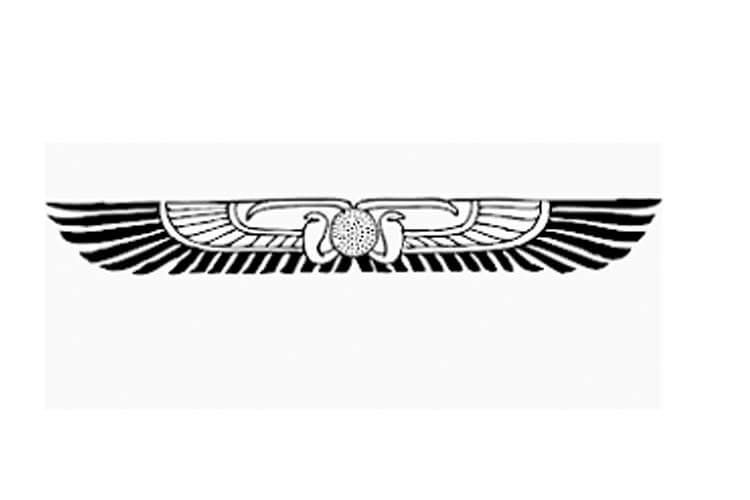
The winged sun is a symbol of ancient Egypt but also used in other ancient cultures. This symbol was also known as Behdety as it was used in the temples to represent the god Behedti, the god of the midday sun.
This symbol was used as an amulet to provide protection to the Egyptians who wore it. In some cases, it has also been depicted as an attribute of other Egyptian gods.
14-Egyptian Ouroboros
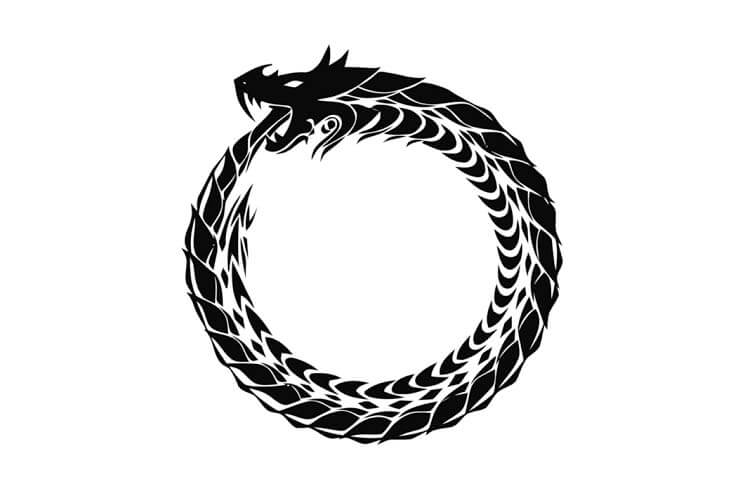
Ouroboros in Egyptian mythology was one of the symbols of the sun, as it represented the journeys of Aten, the solar disk in Egyptian mythology. In addition to that, Ouroboros represented rebirth, recreation of life and perpetuity.
In the Book of the Dead, the image of “the serpent eating itself or the serpent eating its tail” is closely associated with Atum, the first god to be born from the chaotic waters of the Nun (the primordial water from which all creation began in the first place) who was born from these waters in the form of a serpent that was renewed every morning.
The Egyptians passed on the symbol of the Ouroboros to the Phoenicians who eventually passed it on to Greek culture. The name ouroboros was given to the symbol by the Greeks.
Also known as the symbol of infinity, the ouroboros is a symbol very commonly used all over the world, including Nordic mythology, where it is known as Jörmungandr.
15-AMENTA
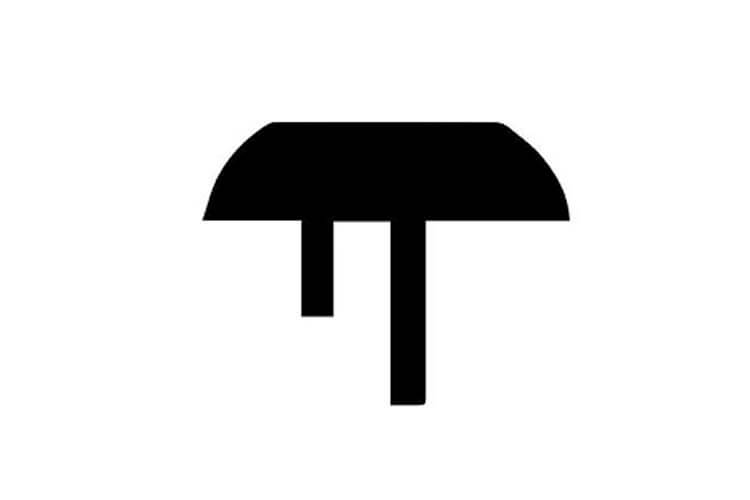
The symbol of Amenta in ancient Egyptian culture represents the land of the dead (the earthly world). Amenta was originally used as the symbol of the horizon where the sunset. Over time, it was used to represent the western bank of the Nile, which was also the place where the Egyptians buried their dead. So it is believed that this is the reason why amenta became the symbol of the Underworld over time.
16-Tiet – The Knot Of Isis
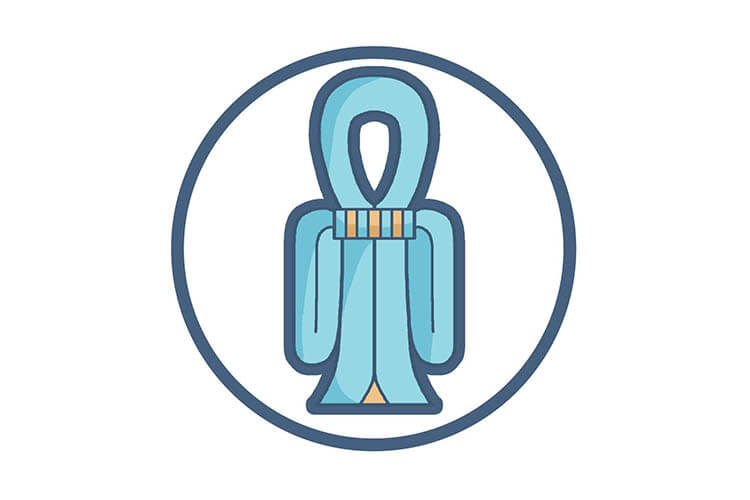
Tiet or Tyet, also known as the Knot of Isis and the Blood of Isis, is an Egyptian symbol that closely resembles the ankh symbol. Its meaning was also interpreted as similar to the ankh. It’s supposed to symbolize life.
It was identified with the goddess Isis and used mostly with the ankh and the Djed pillar of Osiris because together they were interpreted as the dual nature of life.
There is no precise information as to why it is called the Blood of Isis but it is supposed to be given because it represented the menstrual blood of Isis and the magical powers it gave.
17-Feather Of Maat
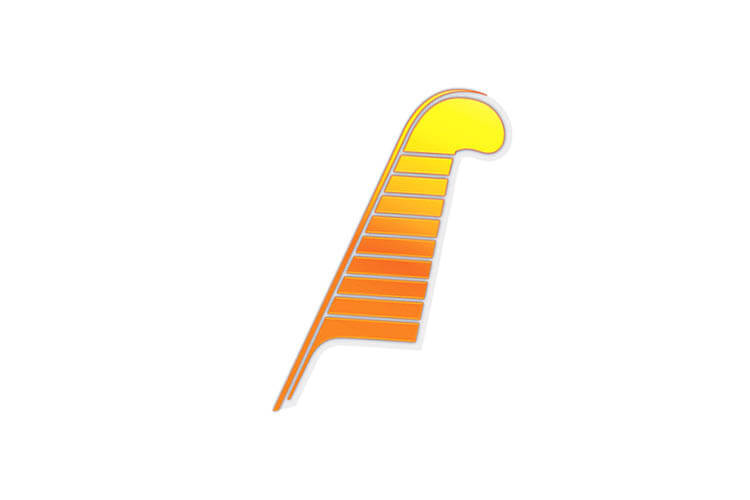
Maat’s feather is one of the most common Egyptian symbols used in hieroglyphics. The goddess Maat represented justice in Egyptian culture and the Ma’at feather can be seen in the context of “ensuring justice” in ancient inscriptions. This is because the ancient Egyptians believed that one’s heart would be weighed against the Maat Feather in the Hall of Two Truths when one’s soul entered Duat. If his heart was found equal or lighter than this it would mean that he was a virtuous person and he would go to Aaru (paradise ruled by Osiris). If not, then his heart would be eaten by Ammit, the goddess who ate the soul and he would be cursed to remain in the Underworld forever.
18-Crook and flail
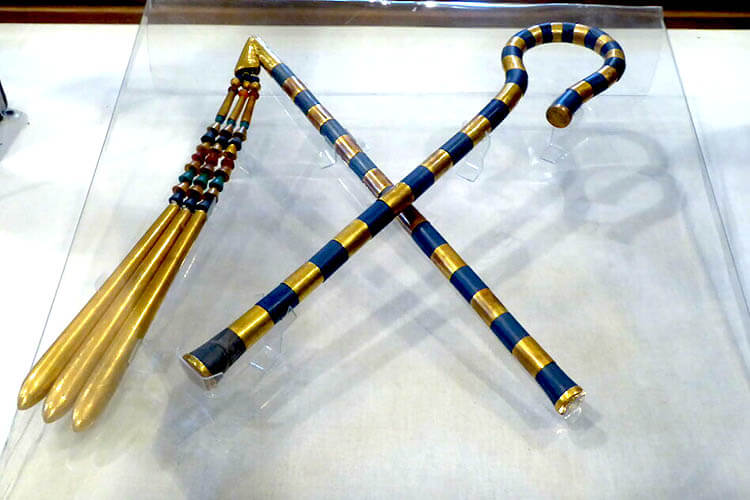
The crook and flail were originally two emblems of the god Osiris but with time they came to symbolize the authority of the pharaohs. Specifically, the staff represented the Pharaoh as the shepherd of his people while the flail symbolized the role of the Pharaoh as the provider of food to his people.
19-Deshret Crown
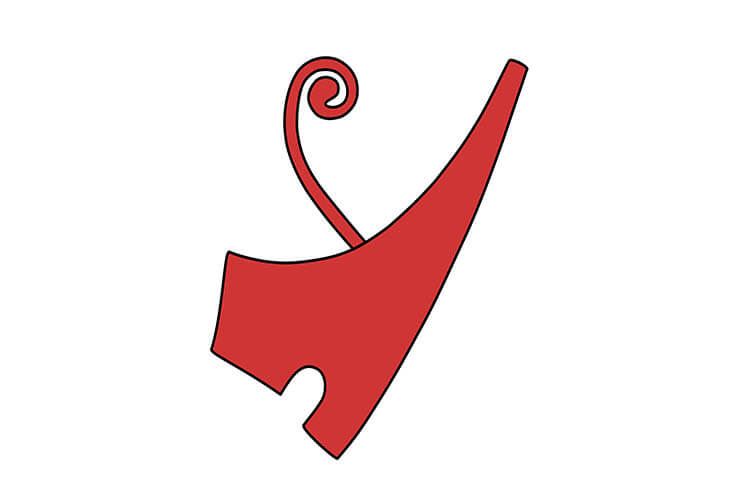
Deshret, also known as the Red Crown of Egypt, is the symbol that represents Lower Egypt, the lands of the goddess Wadjet. It is also used as the symbol of Kemet, the fertile lands within the territory of Seth.
20-Hedjet Crown
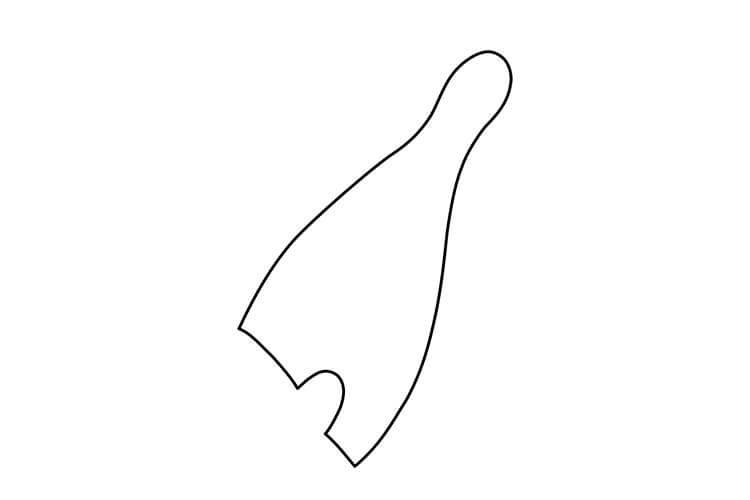
Hedjet the White Crown was one of the two crowns of Egypt representing the kingdom of Upper Egypt. It was combined with the Red Crown of Lower Egypt, Deshret to form the Pschent, Double Crown of Egypt when the country was unified.
21-Pschent Crown
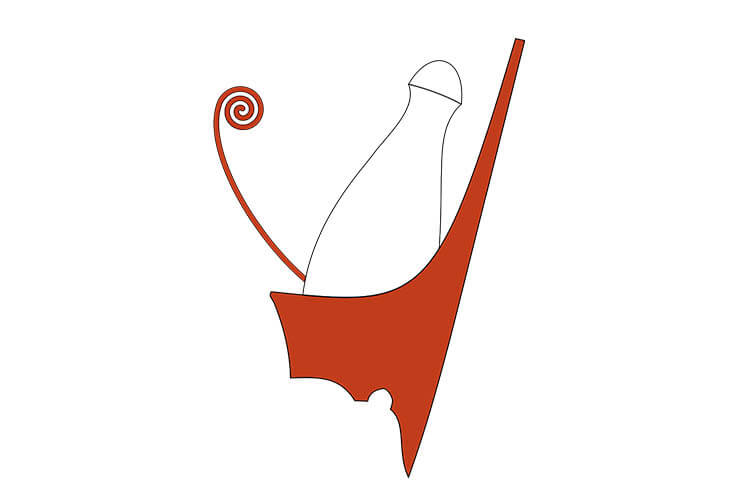
Pschent was the Double Crown of Egypt composed of the Red and White Crown, Deshret and Hedjet representing Lower and Upper Egypt, respectively. It represented the unity of Egypt and the total control of the Pharaoh over all of Egypt.
22- Tree of Life symbol
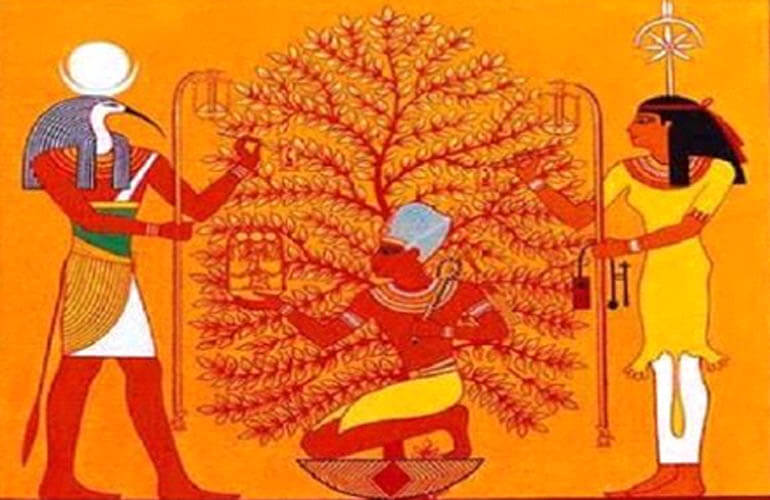
Linked to the presence of water, the Tree of Life was a powerful symbol and icon of ancient Egypt and legends.
According to ancient Egyptian mythology, the mythical Tree of Life provided eternal life and knowledge of the cycles of time.
It was the symbol of life among the Egyptians, especially the palm and the sycamore tree, where the latter was of greater importance because two specimens were supposed to grow at the gates of heaven, where Ra was daily.
The Tree of Life was located in the Temple of the Sun of Ra in Heliopolis.
The sacred tree of life first appeared when Ra, the sun god, first appeared at Heliopolis.
23- Seba
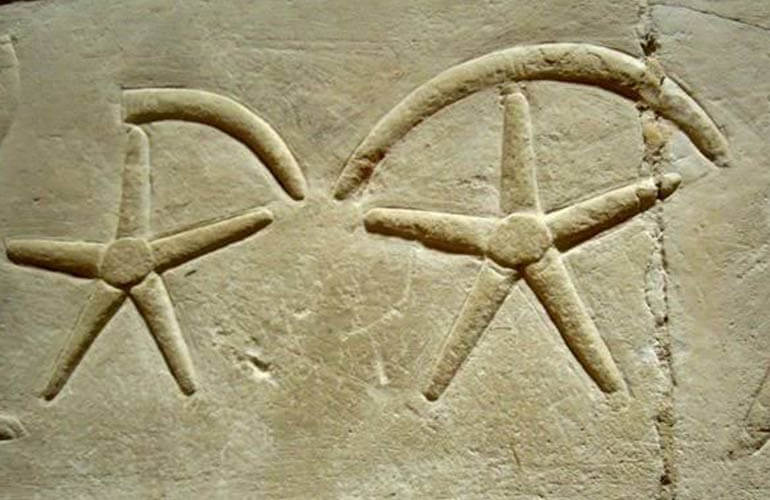
This symbol was used in Egyptian art to represent the stars. The Egyptians had a good knowledge of the stars and the constellations. They often used this symbol to decorate the temples and the interior of the tombs.
The Egyptians believed that the stars also inhabited the Duat, the Duat is the underworld or the realm of the dead and that they descended there every night to accompany the Sun. The symbol of a star inside a circle was a way of representing the underworld.
24- Ajet
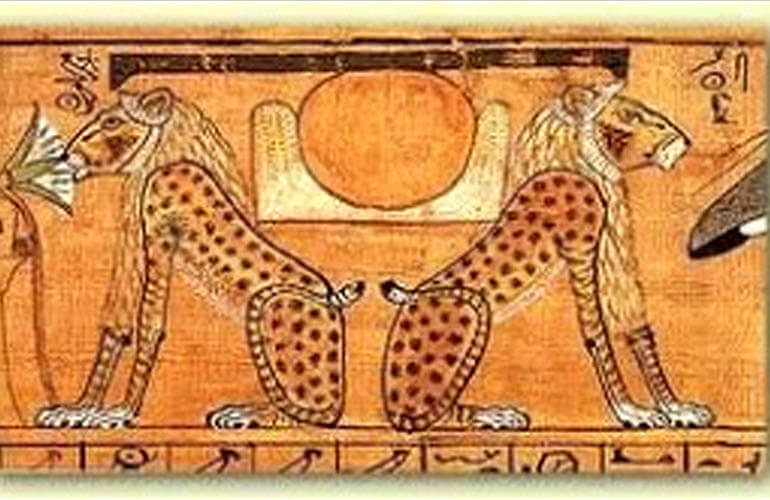
Ajet is an Egyptian hieroglyph, which meant a representation of the Horizon and the Sun above it, its daily birth and setting. Thus embodying the idea of sunrise and sunset. The circle in the center represents the Sun and the shapes found at the base would be the symbol of the Djew or mountains.
In ancient Egypt, it is the place where the sun rises and sets; it is often translated as “horizon” or “mountain of light”. It is usually found the symbol of Ajet, guarded by the god Aker, the god of the underworld, composed of two lions that turned their backs on him, these lions represented the yesterday and today, and the eastern and western horizons of the Egyptian underworld. The symbol Ajet was also associated with the concepts of creation and rebirth.
25- Menat
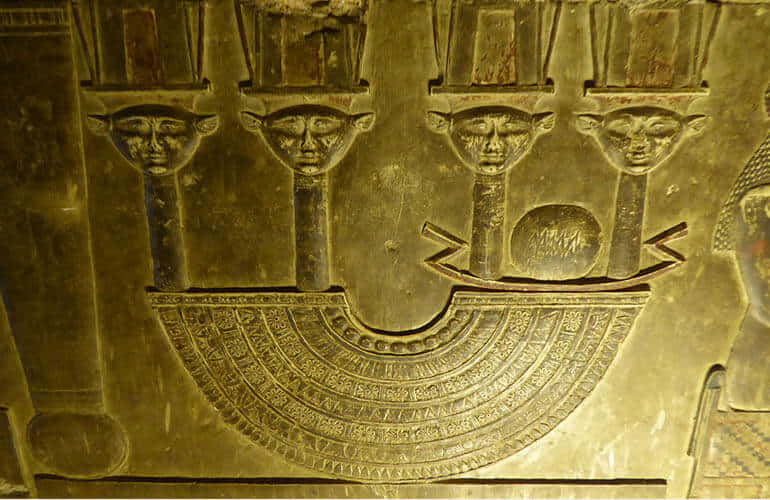
The Menat was an Egyptian necklace with a characteristic shape and a counterweight to keep it in the right position. This necklace was associated with the goddess Hathor and her son. According to Egyptian mythology, it was the amulet from which the goddess Hathor emitted her power. In many of her representations, it can be interpreted as a symbol of fertility, birth, life, and renewal.
26- Egyptian Sistrum
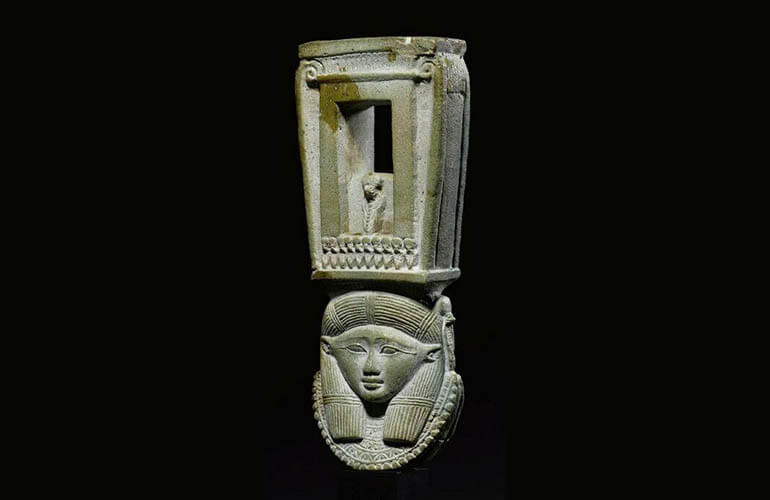
The sistrum was an ancient Egyptian instrument used in rituals to worship the goddesses Hathor, Isis, and Bastet. This instrument had a similar shape to the Ankh symbol and consisted of a handle and a series of metal pieces that produced a characteristic sound when shaken.
The goddesses Isis and Bastet were often represented holding one of these instruments. The Egyptians used this symbol to represent scenes related to dance and festivity. There is also a hieroglyph in the shape of the sistrum
27- Nemyss Egyptian symbol
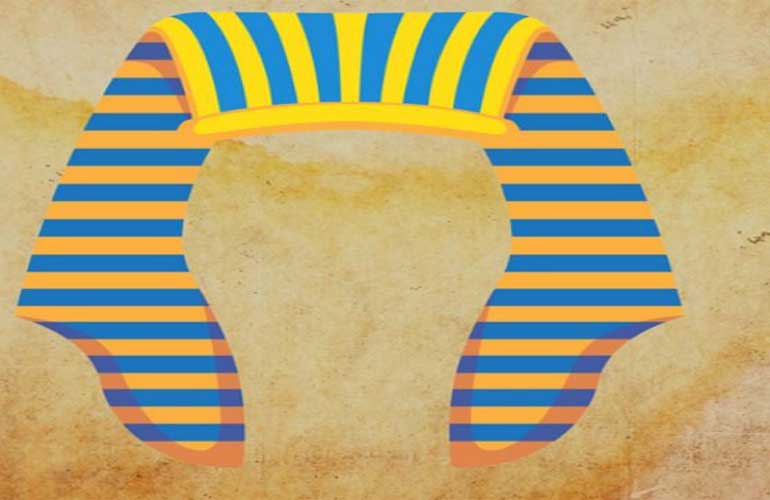
Nemyss is the Egyptian ritual headdress of the pharaohs. It’s best known for the popular images of King Tutankhamen’s sarcophagus. The nemyss is a folded linen cloth that rises from the forehead and hangs down towards the shoulders. The nemyss is still widely used by Kemetic practitioners and by various magical orders.
28- Obelisk Egyptian symbol
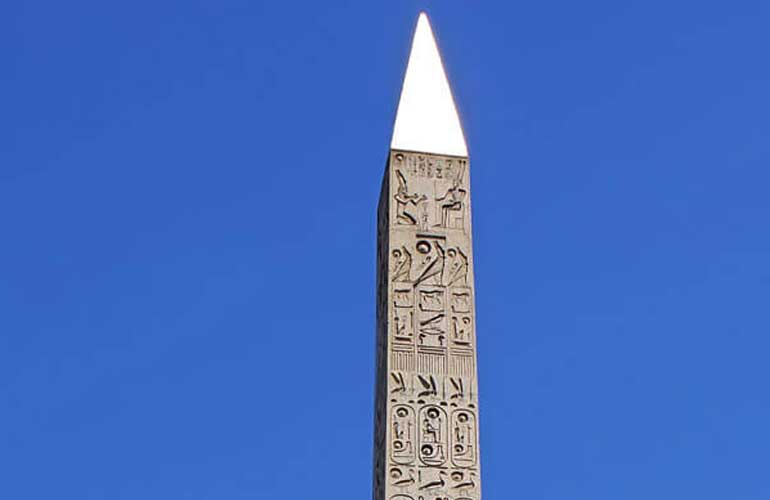
The obelisk is, together with the pyramids, one of the most famous Egyptian symbol of ancient Egypt.
The obelisk is an architectural element that takes on a slender, truncated pyramid shape, surmounted by a pyramid-shaped tip. Usually the obelisks were made from a single block of stone.
in ancient Egypt obelisks were erected at the will of Pharaoh with the intention of invoking the protection of the Sun God Ra. Usually the obelisks were placed at the entrance of the temples, as they were not only the symbol to celebrate the divinity, but they were also accommodation for the god himself, who was believed to be present inside.
Obelisk has a fundamental symbolic importance that is connected to the “energies of the earth”, expression of the active and fecundating principle that penetrates and radiates the passive and fecundated element. As a solar symbol, the obelisk has a strong masculine characterization, and in fact it is no coincidence that its high and imperious shape obviously recalls the phallic element. The alternation of the sun and the seasons caused the overflowing of the Nile River in ancient Egypt, which left a highly fertilizing silt on the arid sand, dark in colour, which made the land fertile and cultivable, thus ensuring the life and survival of the community. This black land, which in ancient Egypt was called kemet, gave its name to the hermetic discipline of Alchemy, which symbolically resumes its principle.
The obelisks also represented a symbol of power, as they had to remind the subjects of the existence of a link between the pharaoh and the divinity.
29- Shenu Egyptian symbol “Shen ring”
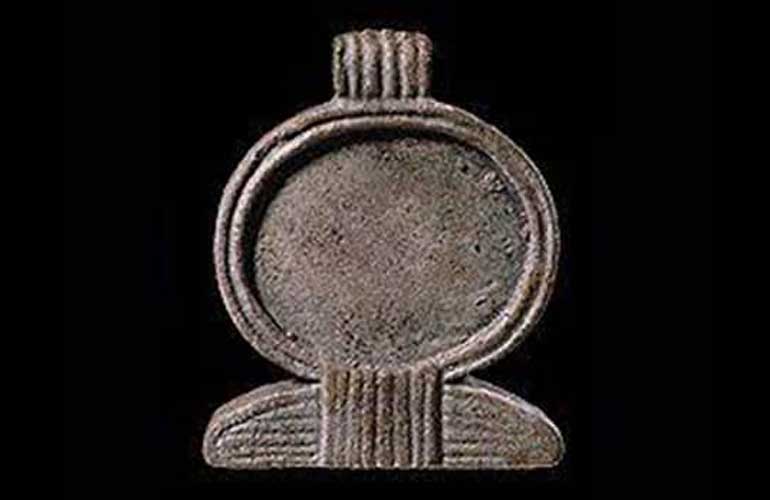
The perfection of the shen ring, devoid of beginning and end, made this amulet a symbol of eternity, its round shape associated it to the disk of the Sun: in the paintings it often appeared supported by animals or birds, like the hawk, with strong heliac connotations.
The magic rings were very revered, attributing them the power to protect against diseases, as each circle represents the protection of one’s ego from external influences, that’s why the magician locked himself inside a magic circle surrounded by symbols and names of “power” that were nothing but physical forms of parts of the unconscious of the magician who would have to fight against himself to obtain the release of energies that would take shape and character depending on the type of ritual that was performed.
Rituals always need external protection at least until the magician learns to build his circle in his aura, at which point he will no longer need particular objects to protect himself from external aggression or pseudo-attacks. The Shen ring is represented as a knotted and braided rope in a circular form. Its meanings are extremely complex but perhaps the most common is the one that represents it as a ring of power.
Enjoy this video about ancient Egypt symbols & their meanings
*Don’t miss our Egypt tour packages & Egypt excursions & Egypt Holiday Packages to discover all the Egyptian history.
Or you can take one of our Cheap Holidays to Egypt / Egypt vacation packages all inclusive.


